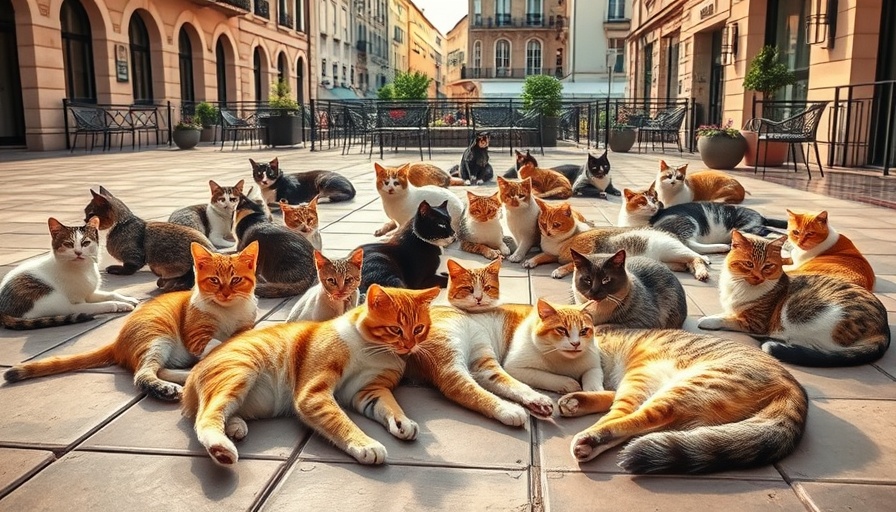
Understanding the Intriguing World of Cat Behaviors
Cats are fascinating companions, and as any cat parent will tell you, their behaviors range from adorable to utterly perplexing. While we may find some actions amusing, they can also serve as a vital communication tool between our feline friends and us. This article examines 15 unusual behaviors that often leave pet owners stumped, offering insights and practical tips for understanding and managing these quirks.
1. The Gift of the Hunt
Many cat owners have experienced the surprise of finding a "gift"—often an unfortunate mouse or bug—left at their doorstep. To humans, this gesture can feel like an unwanted present, but in reality, it's a sign of affection. Cats instinctively bring their prey home, showcasing their hunting skills to their owners. By doing this, they also bring back food for a perceived family unit, a behavior rooted in their wild ancestry.
As pet professionals, it's important to recognize that such behaviors highlight a cat’s instinctual need to hunt and provide. However, keeping your feline friend healthy is crucial, so ensure vaccinations and preventative treatments are up-to-date to avoid any health risks associated with hunting.
2. Kneading: A Comforting Ritual
You may notice your cat kneading you or a soft blanket with their paws—this endearing behavior harks back to kittenhood, where kneading helped stimulate their mother's milk production. As adults, cats continue this soothing activity as a source of comfort and security associated with the nurturing bond between mother and kitten.
This habit not only relieves stress for your cat but also helps in marking their territory, as cats have scent glands in their paws. Providing cozy spots for kneading can further enhance their sense of security, making for a happier, healthier pet.
3. The Cat's Table: Knocking Things Over
The infamous cat habit of batting objects off tables often leaves pet owners frustrated. While it may seem mischievous, this action is less about rebellion and more about instinctual behavior. Cats are naturally curious creatures using their paws to explore their environment, and knocking things over can be an exciting form of play.
To mitigate this behavior, it's essential to make their environment stimulating. Offering diverse toys and scratching posts can redirect their energy away from potentially damaging behaviors. Enrichment in their daily routine enhances their well-being, allowing them to express their natural instincts positively.
4. Beyond the Weird: Behavioral Context
Understanding these behaviors within the broader context of a cat’s natural instincts helps in appreciating their complex natures. Each quirk can reveal essential information about your pet's emotional state and needs. For example, excessive grooming may indicate stress or anxiety, while random bursts of energy may signify a need for more playtime.
As veterinary professionals or pet caretakers, you can use this knowledge to consult on behavioral issues, ensuring both the owner and the cat thrive in their relationship. Recognizing these signals can foster a deeper bond, enhancing the quality of life for both parties.
5. Bridging Understanding: Strategies for Cat Owners
It can feel overwhelming for owners to navigate their cats' peculiarities. One effective strategy is to initiate a dialogue with fellow cat parents or professionals, creating a support network. Joining online forums or local meet-ups can provide insights and a sense of community.
Moreover, attending workshops offered by veterinarians or trainers can arm owners with essential tools to manage behaviors compassionately and effectively. As advocates for pet wellness, encouraging education around cat behavior can not only help owners but also promote responsible pet ownership.
Conclusion: Embrace the Quirks
Every cat has its own personality shaped by instinct, environment, and the bond it shares with its humans. While their strange habits might leave us scratching our heads, they are often communicative acts rooted in their unique histories. By understanding what drives their behavior, we can create enriching environments catered to their needs, leading to happier and healthier feline companions.
If you're a veterinary professional or pet enthusiast, take the time to share insights from this article with fellow cat parents. Help demystify the behaviors that are often misinterpreted, promoting a supportive community that prioritizes the health and happiness of our beloved pets.
 Add Row
Add Row  Add
Add 




Write A Comment